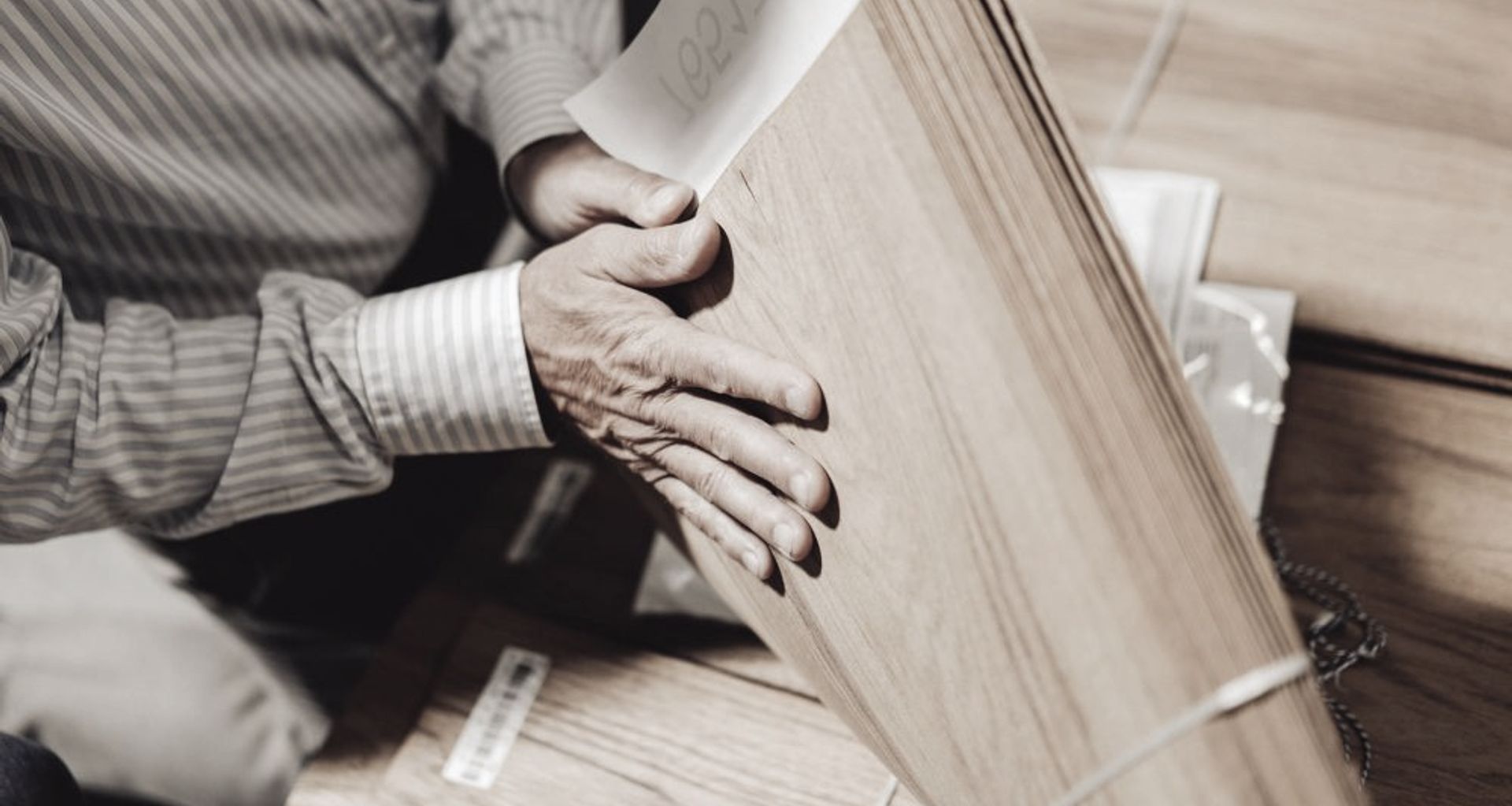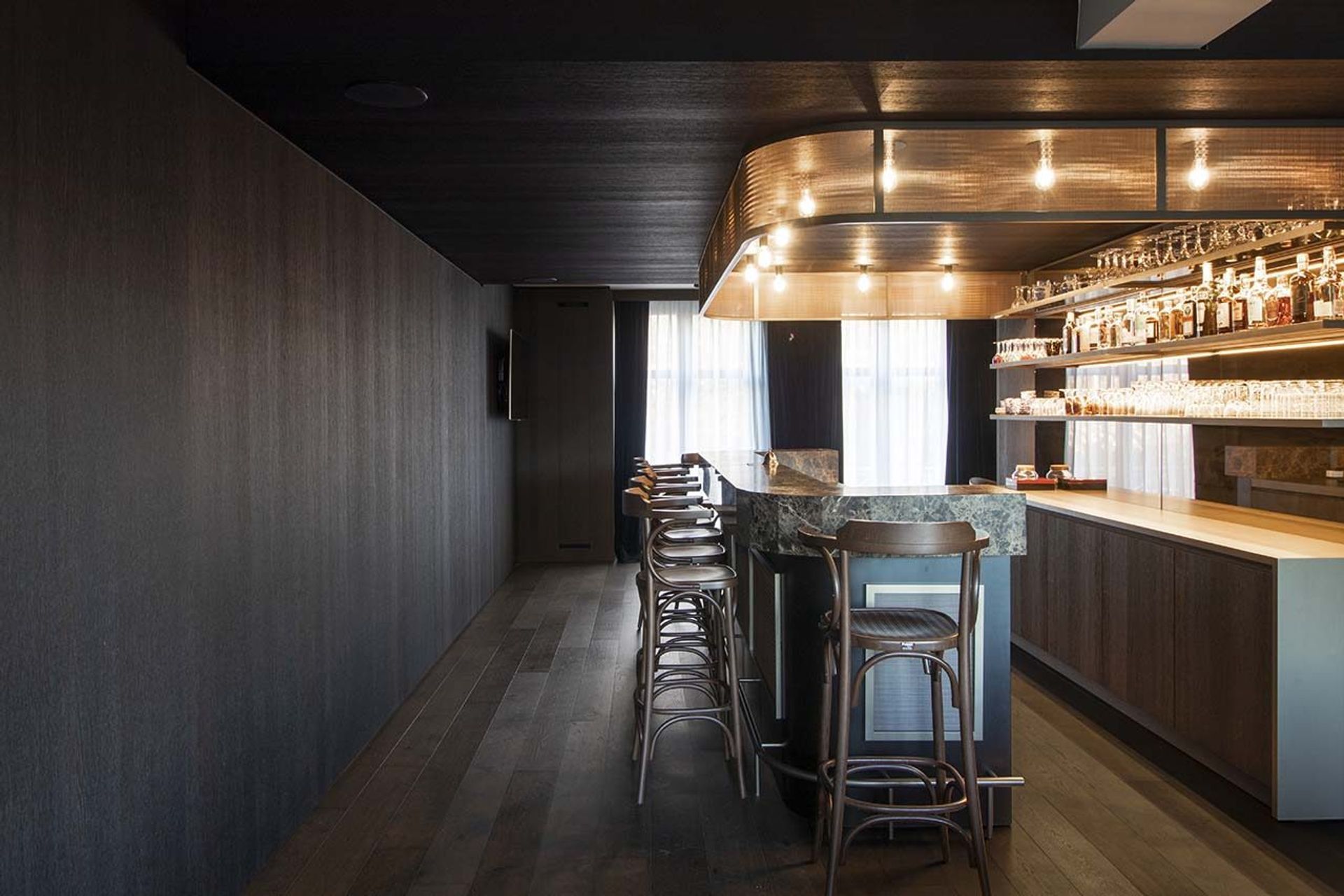What Is Wood Veneer?

Wood Veneer is produced by slicing a log in thin layers with a blade. In contrast to solid wood, which is sawn, veneer makes optimal use of the log without any sawing loss.
Cutting a log can be done in various ways. Each way produces a different pattern, and can be cut to various thicknesses. The standard thickness is 0.6 mm. Most frequently used wood types are also available as a thick veneer.
Veneer retains the natural look and feel of real wood as well as its unique properties, showing authentic colour and pattern variations. To highlight the natural characteristics, we can further process and finish the veneer wood to the client’s personal taste. Veneer lives, gaining in expression throughout the years. This allows this genuine natural product to discern itself from imitations.

Wood Veneer Applications
Wood veneer is mainly used for interior decoration applications in many different segments. It’s ideal for residential projects, hotel projects, offices and many more. In addition, veneer is also processed to create a variety of products such as veneer parquet, flexible veneer sheets, wood veneer boards, wood veneer wallpaper, etc. In other words, veneer can give any interior a unique look and feel

Each Veneer is Unique
Every tree is different so every veneer product has a unique appearance. The same tree can never be found twice in nature. This also means that the colour and pattern can vary within the same wood species. After all, veneer is real wood and not an imitation like laminate or melamine. The latter are both imitations of wood on paper.
The colour of wood veneer is also influenced by light in the room and this can give the wood an even warmer feel. The numerous imitations of different wood types have made it difficult for the consumer to distinguish the real natural product from the imitations.
The wood structure which is unique for every piece of wood veneer, the colour which continues to enhance the appearance, the ability to repair and renovate are just some of the advantages that distinguish the real thing from the would-be products.
Jointing Techniques
Using advanced technology, we are able to join the sliced wood into a veneer sheet. The images below show the different techniques that we apply. This allows you to decide on the final look and feel of your panel. You can make the optimal choice for your application. Whatever you choose: real wood is always unique and gives your project that extra character.
Book matched
This is the standard jointing method. The sliced strips of veneer wood are jointed mirrored, two by two. This technique clearly shows the pattern variations of the tree in the jointed sheet.
Example:
Wood species: American Walnut
Slicing technique: CROWN CUT
Jointing technique: BOOK MATCHED
Slip matched
The veneer strips are matched one after the other and then jointed. This is the recommended jointing technique if the veneer should be stained. As all strips have the same side up, there is no colour difference between the strips
Example:
Wood species: American Walnut
Slicing technique: CROWN CUT
Jointing technique: SLIP MATCHED
Reverse slip matched
The veneer is more evenly spread throughout the veneer sheet due to the head-to-head combination.
Example:
Wood species: American Walnut
Slicing technique: CROWN CUT
Jointing technique: REVERSE SLIP MATCHED

Book matched
This is the standard jointing method. The sliced strips of veneer wood are jointed mirrored, two by two. This technique clearly shows the pattern variations of the tree in the jointed sheet.
Example:
Wood species: American Walnut
Slicing technique: CROWN CUT
Jointing technique: BOOK MATCHED
Slip matched
The veneer strips are matched one after the other and then jointed. This is the recommended jointing technique if the veneer should be stained. As all strips have the same side up, there is no colour difference between the strips
Example:
Wood species: American Walnut
Slicing technique: CROWN CUT
Jointing technique: SLIP MATCHED
Reverse slip matched
The veneer is more evenly spread throughout the veneer sheet due to the head-to-head combination.
Example:
Wood species: American Walnut
Slicing technique: CROWN CUT
Jointing technique: REVERSE SLIP MATCHED

Mix-matched
Mix-matched is literally what it says: mixing and matching. The veneer strips are jointed randomly with variations in colour and structure, creating an interesting yet cohesive effect. Mix-matched is the veneer alternative for the plank effect of solid wood. It is possible to create a mix of both crown cut and quarter cut, or use crown cut only or quarter cut only.
Example:
Wood species: American Walnut
Slicing technique: QUARTER CUT
Jointing technique: MIX-MATCHED
Example:
Wood species: American Walnut
Slicing technique: CROWN CUT
Jointing technique: MIX-MATCHED
Example:
Wood species: American Walnut
Slicing technique: QUARTER & CROWN CUT
Jointing technique: MIX-MATCHED

